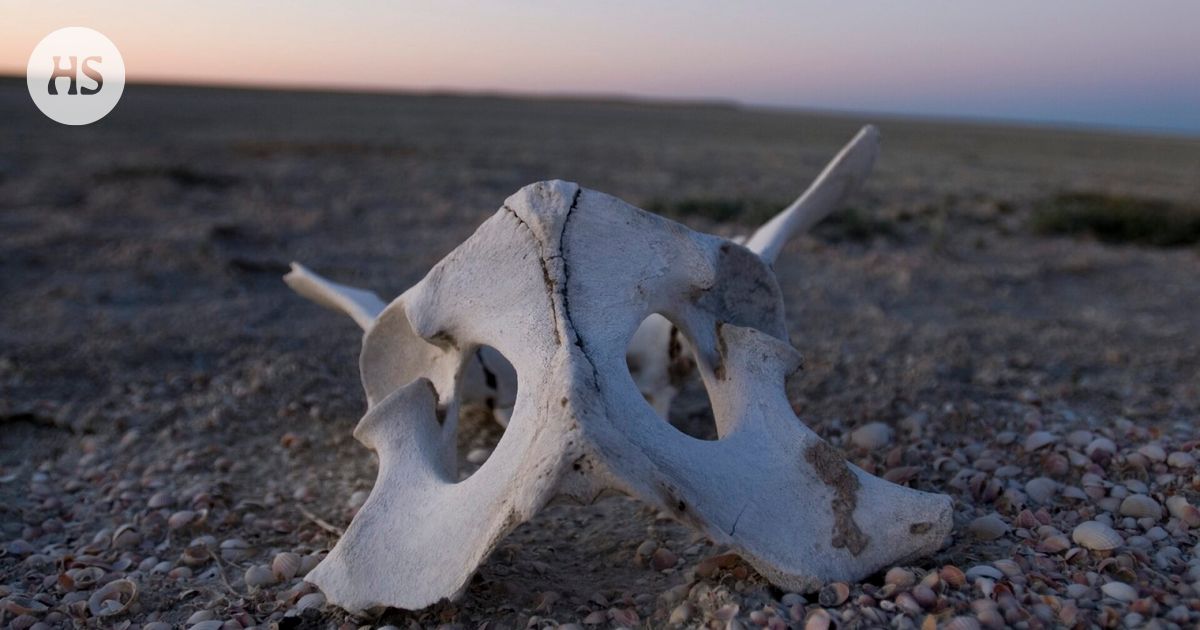Surroundings|The US Development Co -operation Agency, threatened by a harsh qualifying, supports a project that is looking for plants to bind harmful dust in the dried lake.
The abstract is made by artificial intelligence and checked by man.
Lake Aral was once the fourth lake in the world, but now there are only stripes left.
Dust from the Araljärvi area spreads far and contains harmful substances such as residues of chemical weapons.
The countries of the area, such as Uzbekistan, are trying to revive the remnants of the lake and to bind dust through plantings.
Yet Half a century ago, Araljärvi was a large lake with an area of almost 70,000 square kilometers. The lake on the shores of Kazakhstan and Uzbekistan was the fourth largest in the world.
Now, there have been only stripes in Araljärvi for years, where the water level may vary slightly.
A new dried pool has been born new Aralkum Wildernesssummarizes the fresh summary Science Alert in the online magazine.
Recent studies also tell you how a huge dust nuisance has been followed by the lake’s disappearance over a wide area for people and nature.
Araljärvi The disappearance has almost doubled into the atmosphere of the amount of dust from the bottom of the lake in Central Asia, estimates research last year.
Now published in January research Confirms that the exposed bottom of the lake is downright a huge source of salty dust. The Central Asian environment is, in the words of a study published by Scientific Reports, very fragile and sensitive to pollution.
Dust floats several hundred kilometers into the cities. Salty particles spoil the crops and drinking water. Dust contains not only salt but also residues of Soviet fertilizers and pests.
Widely floating dust can also accelerate the melting of glaciers in the Central Asian mountains and thus further weaken the area’s water reserves. Satellites may not even detect all dust, up to two -thirds hidden under the clouds.
Lost The harmful dust spreading from the lake area could be tried to tie with plants that would withstand a salty environment. The biggest job is in the lands of the areabut help in planting have provided the European Union and the United States.
Kazakhstan announced last year 500 hectares of trial With the US Development Agency (USAID), but during the new US administration project The sequel may be uncertain.
President Donald Trump The administration intends to dramatically reduce the staff of the Development Cooperation Agency. According to the president, the whole The agency should be abolished And the agency’s activities have been frozen.
Over the years, there have been useless ships at the bottom of the dried lake. Picture from 2007.
Araljärvi The disappearance is UN desertion program According to the biggest environmental disasters.
The disappearance of the lake is particularly associated unprecedented For the cultivation of cotton. The Central Asian area was supposed to become the producer of the then Soviet cotton. Araljärvi rivers that bring water water was directed to the fields.
As the surface of the lake fell and salted, the waters began to become unworthy. The lands around the lake were salted as farmers rinsed the fields with water in the lake. The crops decreased.
According to a Science Alert article, there are only about 8,000 square kilometers of water in the Lake Aral Lakes. It corresponds to about eight Päijänne, but the original Lake Aral was the fourth largest in the world.
Back in 1960, Araljärvi was at best over 420 kilometers long and more than 280 kilometers wide. The depth was up to nearly 70 meters. Now the water is up to 20 meters, described The Caspian Post at the beginning of February.
Kazakhstan’s newspaper The Astana Times However, the northern strip left in the lake has recovered a little and has received more water during the winter. It has been promoted by the construction of a large dam on the southern shore of the northern part of the lake.
In the US space administration video Visible to the disappearance of the lake in 2000-2018.
